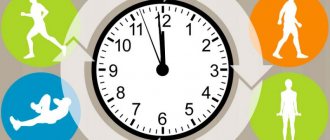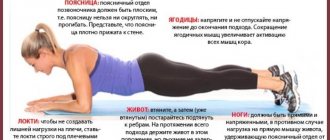Home > Blog > How many times a week should you stretch?
Stretching is a set of muscle stretching exercises that allows you to develop joint flexibility, elasticity of tendons and ligaments. Classes are necessary for athletes and ordinary people who do not have special physical activity, and are carried out as part of the prevention of diseases of the musculoskeletal system. Before training, you should learn about the types of stretching and how many times a week you need to stretch to achieve results.
Benefits of regular exercise
The main benefit of stretching is improving coordination of movements, flexibility and plasticity of the body. The benefits of exercise include:
- reducing the likelihood of injury;
- improving the quality of movements, which is important for dance training and fitness;
- elimination of back and lumbar pain;
- normalization of blood circulation.
In addition, a great mood appears, and it becomes easier to do everyday activities, choreography and various sports.
Types of stretching
There is a soft and deep type of stretching. In the first case, the muscles are stretched only to their characteristic length. The deep look involves stretching to an unusual length.
For beginners, it is better to start with static exercises.
Types of stretching:
- Static is ideal for beginners. The point of the exercises is that the muscles are tensed and kept motionless for some time.
- Dynamic - similar to static stretching, but the muscles first tense and relax after a certain time.
- Active - muscles that are in a passive state are stretched by the work of surrounding muscles.
- Isometric - the exercise is based on the principle of resistance and is performed in four stages: tensing and relaxing the muscles, and then stretching them and fixing them in a new state.
- Ballistic - ideal for people who do not have good stretching, this type will not work. There are rapid movements with a sharp increase in amplitude.
- Proprioceptive neuromuscular - the main task is to restore joint mobility after injury, illness or surgery. Represents physical therapy.
To answer the question of how many times a week you need to do stretching, you should consult with a specialist, especially when it comes to proprioceptive neuromuscular training. The doctor will determine the optimal number of sessions.
Contraindications for stretching
Every sport has contraindications, stretching is no exception. People should not do it:
- With recent fractures - if your cast has been removed, this does not mean that you immediately need to run to training. The bones should recover, after which stretching can begin.
- With dislocations , you should wait until the ligaments return to normal.
- With problems of the cardiovascular system, joints and spine.
Expectant mothers also need to be careful about stretching. If there are no problems with the course of pregnancy, there are no other contraindications, then stretching will only be beneficial and will help prepare for childbirth. Of course, the exercises are performed under the close attention of the instructor.
It is recommended to attend training 2-4 times a week, devoting 30-50 minutes to classes. Stretching is not just a five-minute warm-up before the main power loads, but a full-fledged activity that requires a sufficient amount of time, because this is the only way to achieve success.
Where to study?
Many are sure: if professional equipment is not needed, then you can do without a trainer. There are plenty of videos on specific types of training online. But it's not that simple. Self-study has at least three proven disadvantages:
- risk of injury;
- lack of results due to improper execution of exercises;
- insufficient motivation for regular exercise.
All this can be easily avoided if you work on yourself in a team or under the supervision of specialists who will select the appropriate program and help in its implementation.
How to exercise correctly
An intensive warm-up will help your muscles do their best when performing complex elements.
Before training, warm up your muscles and prepare for the exercises. It is important to maintain even breathing. Do not stretch through the pain, because this is fraught with injuries and dislocations. Only mild pain that does not cause discomfort may be present. You need to stretch all muscles and spend the same amount of time on them.
The form of clothing plays a big role. Choose tracksuits made from durable materials: polyester, nylon, elastane. It is better to exercise in tight-fitting clothes, which help distribute heat throughout the body, which helps eliminate extra pounds. At the same time, follow your sleep and nutrition schedule.
Any stretching session consists of a warm-up, special exercises for flexibility and stretching, and muscle relaxation. The main thing is to train regularly, without skipping, and consult with doctors about contraindications. Then the answer to the question of how many times a week you need to do stretching will not cause difficulties.
HOW TO STRETCH CORRECTLY?
Learning to stretch is very simple. But you can stretch correctly and incorrectly. Proper stretching is done in a state of relaxation, slowly, focusing on the muscles being stretched. The wrong way to stretch (unfortunately, this is what many people do) is to jerk or stretch the muscles until it hurts; these methods may do more harm than good.
If you stretch correctly and regularly, the movements will become easier and easier over time. It takes a long time to release a tight muscle or group of muscles, but you will immediately stop regretting it when you feel better.
1. Light stretching
When starting to stretch, spend 10-15 seconds doing a gentle stretch.
No jerking! Get to a point where you feel moderate tension and relax in this position. The feeling of tension should gradually subside. If this doesn't work, slightly reduce the amplitude of the stretch and find a position in which you find the feeling of tension pleasant.
You have to get to the point where you can say to yourself, “I feel a stretch, but it doesn’t hurt at all.” Gentle stretching reduces stiffness, muscle tension and prepares muscle tissue for developmental stretching.
2. Developmental stretching
After light stretching, slowly move on to developmental stretching. We warn you again: no jerking!
Increase the stretch centimeter by centimeter until you again feel moderate tension in the muscle and hold this position for 10-15 seconds. Stay alert. The tension, as in the previous case, should gradually subside; if not, loosen the stretch slightly. Remember: if in a fixed position the tension increases and/or causes pain, then the amplitude of the stretch is too large! Developmental stretching adjusts muscle tone and increases flexibility.
3. Breathing
Breathing should be slow, rhythmic and meaningful. If you need to bend forward while stretching, exhale and, holding the position, breathe slowly. Don't hold your breath while stretching. If your body position prevents you from breathing normally, it means you are not relaxed. So just relax the stretch so you can breathe freely.
4. Account
When starting to stretch, count the time of each exercise to yourself; this will help you maintain the required tension for a long time. After some time, you will learn to determine the degree of stretching by how you feel, without being distracted by the count.{banner_st-d-1}
5. Muscle stretch reflex
Your muscles are protected by a mechanism called the stretch reflex. Every time you overstretch muscle tissue (by jerking or stretching too far), the nervous system sends a reflex command to the muscles to contract; In this way, the body protects the muscles from injury. As a result, stretching too much results in even more tightness in the very muscles you are trying to stretch! (The same involuntary muscle reaction occurs when you carelessly grab something hot; before you realize what has happened, you are already withdrawing your hand from the hot object.)
Excessive stretching or jerking during exercise tightens the muscles and triggers the stretch reflex. For this reason, microscopic tears form in the muscle fibers, which cause pain and physical injury. The latter, in turn, lead to the formation of scar tissue in the muscles and a gradual decrease in their elasticity. The muscles become stiff and painful. It's hard to become a fan of daily stretching and gymnastic exercises if you have to overcome pain every time!
6. Pain will not bring you any good.
Many of us remember the rule “there is no result without pain” from our school days. We were taught to perceive pain as a prerequisite for physical development and explained that “the stronger the pain, the faster you will achieve results.” But that's not true. Stretching done correctly is completely painless. Pay more attention to your body and remember that pain is always a warning that something is going wrong.
Gentle and developmental stretching, carried out in accordance with the principles outlined in previous posts, does not cause a muscle stretch reflex and does not cause pain.
Over time, you will see for yourself that stretching in a light-to-developing pattern will naturally increase your flexibility. Regular stretching, done in a relaxed state, will allow you to gradually raise the bar of physical capabilities and get closer to your natural potential.
WHEN
Stretching can be done at any time that suits you: at work, in the car, at the bus stop, walking down the street, under a shady tree after a walk, or on the beach. Stretch before and after exercise, but also don't neglect any opportunity that arises during the day.
Here are some handy points:
• in the morning before the start of the working day; • at work to relax the nervous system; • after sitting or standing for a long time without moving; • when the body becomes numb;
Stretching with Anix Dance school trainers
The Anix Dance pole dance studio invites everyone to attend stretching classes. Professional instructors will help you improve your physical condition, recover from injuries, and adjust your weight. The training programs are designed in such a way that the necessary muscle groups are worked out, and the results are noticeable after just a few sessions.
You can choose a training schedule that is convenient for you. We provide the opportunity to study both in a group and individually. Group training will allow you to meet new interesting people and achieve your goals together with them. Individual lessons are suitable for those who want to concentrate on stretching and perform exercises under the supervision of a teacher.
The benefits of morning workouts
They relate to both stretching and other activities related to physical activity:
- When training on an empty stomach, fat accumulation is better burned, since the body is forced to expend resources from previously accumulated reserves, and not the energy received during breakfast.
- Appetite decreases, which has a beneficial effect on your figure. Scientists have not established the exact reasons for this phenomenon; conclusions are based on survey results.
- Due to the increased intensity, training in the first half of the day is more effective than those carried out in the late afternoon.
There is an opinion that the period of muscle recovery after morning exercises is easier and less painful, and the risk of injury is reduced. Although the latter is minimal when doing stretching under the supervision of a trainer. Morning stretching is good for early risers. They are full of vigor, rise early and are ready for exploits and accomplishments immediately after waking up.











